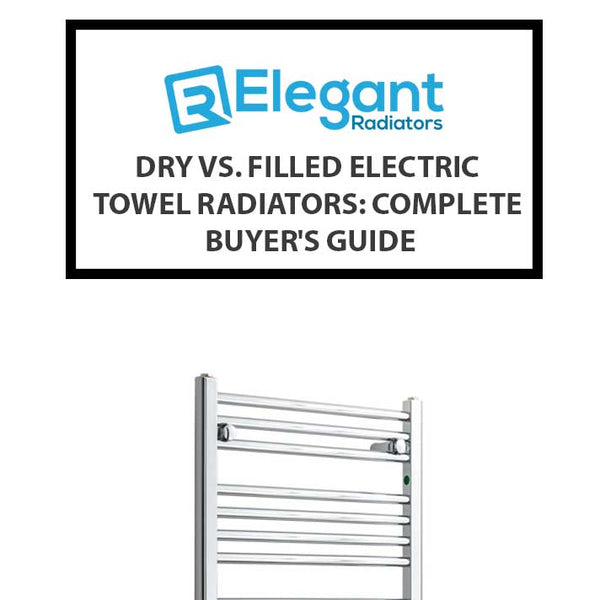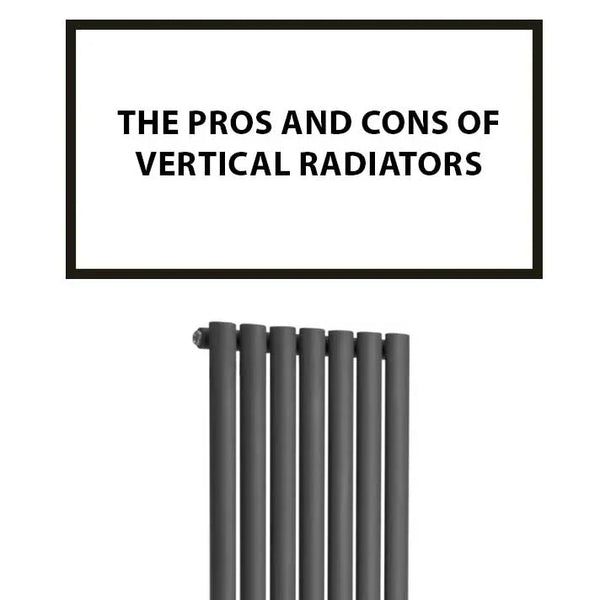The Importance of BTU: Choosing the Perfect Radiator for Your Space

When designing or upgrading your home heating system, one critical number determines whether you’ll feel consistently warm and comfortable, or waste energy while still feeling cold the BTU. Standing for British Thermal Unit, this measurement is often overlooked, but it’s the single most important factor in ensuring your radiator performs efficiently and effectively. Choosing a radiator without calculating your room’s required BTU is like trying to buy a boiler without knowing the size of your home it leads to poor performance, inflated bills, and unnecessary stress. Whether you’re a homeowner planning a bathroom renovation, a plumber fitting multiple rads in a new build, or a specifier choosing radiators for a commercial property, understanding BTU is non-negotiable.
What Is BTU and Why Does It Matter?
BTU, short for British Thermal Unit, measures the amount of heat required to raise the temperature of one pound of water by one degree Fahrenheit. While that may sound technical, in practice, it translates to how much heat your radiator can deliver to a space. Every room in a property has a different BTU requirement based on multiple variables: the room’s volume, insulation levels, the number and size of windows, orientation to sunlight, and even wall materials. BTU tells you exactly how much heating power is needed to maintain comfort.
Installing a radiator without considering BTU leads to two possible problems either the room is underheated because the radiator is too small, or the room becomes stuffy and overheated because the radiator is too large. In both cases, you’re left with an inefficient system that consumes more energy than necessary and increases your heating bills. On the other hand, correctly matching radiator output with the room’s heat demand means you’ll enjoy a warm, energy-efficient home with stable room temperatures and lower operational costs.
How to Calculate the Right BTU for Your Room
Getting your BTU calculation right involves more than just measuring the floor area. While room dimensions (length × width × height) are the foundation, several other crucial elements come into play. First, assess the quality of insulation in the room. Double-glazed windows, cavity wall insulation, and modern doors all reduce heat loss meaning you’ll need fewer BTUs. In contrast, older homes with poor insulation, single-glazed windows, or draughty walls demand a higher BTU output to compensate.
Window count and orientation also affect heat loss. Rooms with large north-facing windows may need extra heating, while a south-facing conservatory might retain warmth more efficiently. Ceiling height should also be factored in; higher ceilings mean more air volume to heat. Additionally, the room’s function matters bathrooms often need a quick heat-up time for comfort, while bedrooms may require steady warmth through the night.
To simplify all this, a professional-grade BTU calculator is the best tool to input your measurements and environmental factors and get an accurate BTU target. It removes guesswork and ensures you invest in the right radiator for your specific needs not just one that fits the wall space.
Matching Radiator Type and BTU Output
Once you’ve calculated your BTU requirement, the next task is to find a radiator that matches it and this is where many people make costly mistakes. Every radiator type delivers different levels of output based on design and materials. For example, single panel radiators are sleek and compact, making them ideal for smaller, well-insulated rooms with modest heat needs. But for larger or poorly insulated spaces, they may fall short. In such cases, double panel radiators (with or without convector fins) offer more surface area, boosting heat transfer and delivering higher BTU levels.
Column radiators, particularly multi-column models, are perfect for high-ceilinged or period properties where a higher heat output is needed. They combine old-world charm with modern efficiency. Electric towel rails, while not always delivering the highest BTU, are invaluable in bathrooms or utility rooms where space is tight and focused warmth is needed. Finally, dual fuel towel radiators offer the best of both worlds connected to your central heating in winter, yet capable of independent electric use in summer, they provide flexible year-round comfort without compromising BTU performance.
Each product on our site clearly displays its BTU output, allowing customers to match style with functionality. A designer radiator that looks great but underheats the space is not a good investment. Always check that the product delivers the required output or consider multiple radiators for larger rooms.
Common Mistakes to Avoid in BTU Planning
Too often, homeowners and even installers overlook critical BTU-related considerations. A common error is relying on rough square meter calculations, ignoring ceiling height, wall insulation, and window placement. Others select radiators based purely on appearance leading to choices that may look premium but underperform drastically. Another mistake is assuming that one oversized radiator will be more efficient than several well-distributed ones. In reality, heat disperses more evenly with multiple radiators placed strategically.
Moreover, low-temperature systems such as condensing boilers or heat pumps need radiators with larger surface areas to deliver the same BTU output. Installing a standard radiator in such a system can result in lukewarm rooms. It’s also important to plan ahead converting a spare bedroom into a home office or gym will alter the heating requirement. Therefore, revisiting your BTU calculation whenever room usage changes is a smart move.
Can You Have Too Much BTU?
Yes, more isn’t always better. Oversized radiators can heat a space too quickly, leading to uncomfortable temperature spikes, energy wastage, and frequent on/off cycling of the system. This not only shortens the lifespan of components but also undermines temperature stability. A perfectly matched BTU rating ensures your radiator works at optimum performance not racing to heat the room and then shutting off, but maintaining an even, comfortable climate with minimal intervention. Efficiency lies in balance, not excess.
The Role of Thermostatic Controls in BTU Efficiency
No heating system is truly efficient without control, and this is where thermostatic radiator valves (TRVs) make a real difference. A TRV regulates the flow of hot water based on the room’s actual temperature, preventing overheating and maintaining consistent warmth. Combined with smart thermostats, these systems learn your routines, adapt to usage patterns, and help save energy by only using what’s necessary. In homes with zoned heating, pairing correct BTU rated radiators with TRVs allows for granular control across different spaces, optimising both comfort and cost.
For professionals and landlords, this level of control is also attractive from a compliance and energy efficiency standpoint, aligning with Part L Building Regulations and EPC improvements.
Ready to Find the Perfect Radiator?
Understanding BTU is more than a technical exercise it’s the key to a warm, cost-effective and sustainable home. With the right BTU calculation, you can confidently select a radiator that not only suits your interior design but also performs exactly as needed. At Elegant Radiators, we make it easy by offering a full range of radiators, towel warmers, and heating elements all listed with precise BTU outputs, sizes, and specifications. Use our BTU Calculator, explore our products, and take the guesswork out of heating.
- ✅ Use our free BTU Calculator to find your ideal radiator size in seconds.
- ✅ Explore our bestselling Heated Towel Rails for every room and budget.
- ✅ Looking for dual fuel flexibility? Discover our Electric Towel Rails.
Frequently Asked Questions (FAQs)
1. What does BTU mean in radiator heating?
BTU (British Thermal Unit) is a unit of measurement that tells you how much heat a radiator can emit. It helps determine whether the radiator is suitable for the size and insulation level of your room.
2. How do I calculate how many BTUs I need?
You can calculate your required BTU by considering your room’s length, width, height, insulation quality, number of windows, and whether external walls are present. Using a BTU calculator is the most accurate way.
3. Is it bad to install a radiator with a higher BTU than needed?
Yes. Oversized radiators can overheat your space, cycle too frequently, and waste energy, leading to discomfort and higher energy bills.
4. Can I use one large radiator instead of multiple smaller ones?
While it may seem convenient, using a single large radiator often results in uneven heat distribution. Multiple units placed strategically offer better comfort and efficiency.
5. Do electric radiators and towel rails have BTU ratings too?
Yes. Electric towel rails and radiators are also measured in BTUs or watts, helping you compare heat output across different heating types.
6. What happens if I choose a radiator with too few BTUs?
An underpowered radiator will struggle to warm the room, especially in colder months. It will run longer and use more energy without reaching a comfortable temperature.
7. How often should I re-calculate BTU needs?
Whenever you renovate, insulate, change the function of a room, or install new windows, you should recalculate your BTU needs.
8. Does radiator style affect BTU output?
Yes. Panel type, column count, materials, and design significantly impact how much heat a radiator emits. Always check the product’s BTU rating before purchase.
9. Are thermostatic radiator valves (TRVs) important for BTU control?
Absolutely. TRVs help manage temperature more accurately by reducing flow to a radiator when the desired warmth is achieved, boosting efficiency.
10. Where can I find reliable BTU-rated radiators?
At Elegant Radiators, all radiators are clearly listed with BTU values, dimensions, and specifications to help you find your ideal match.







